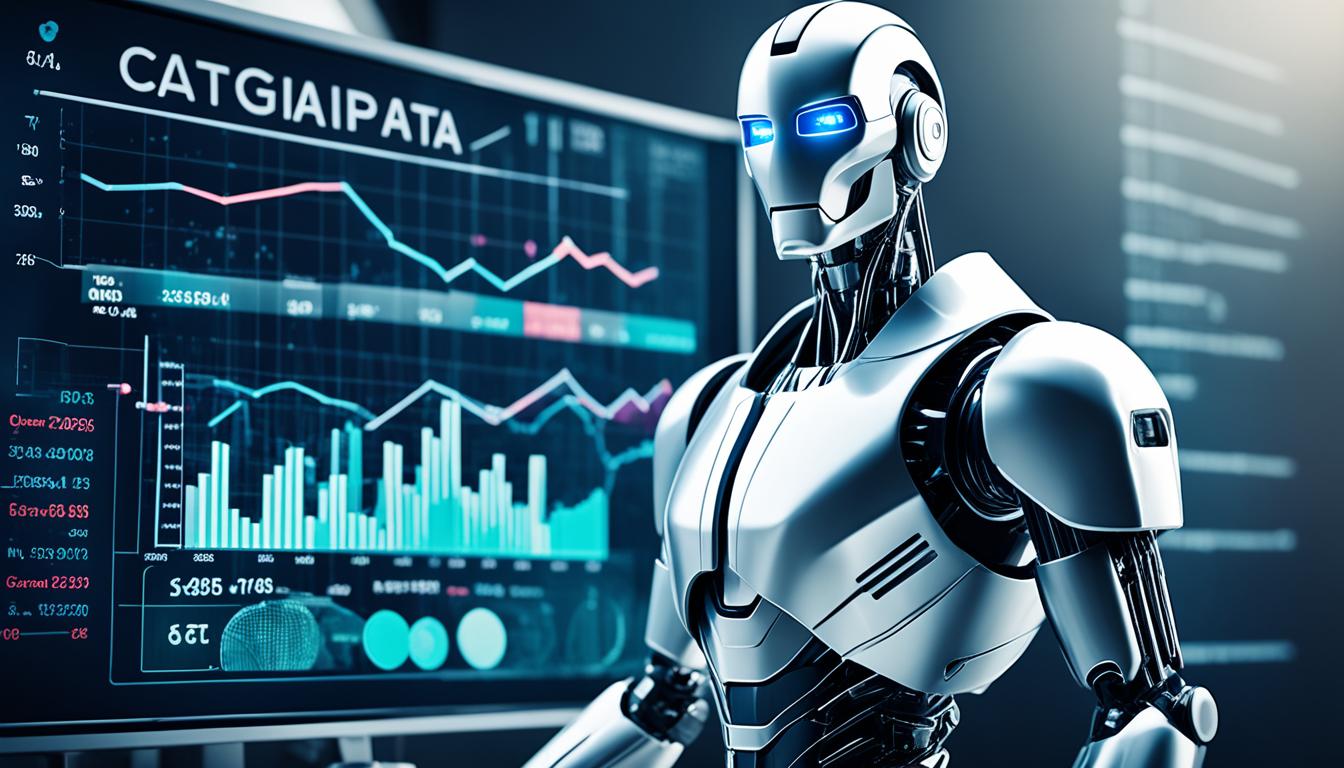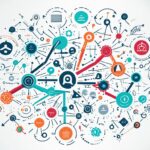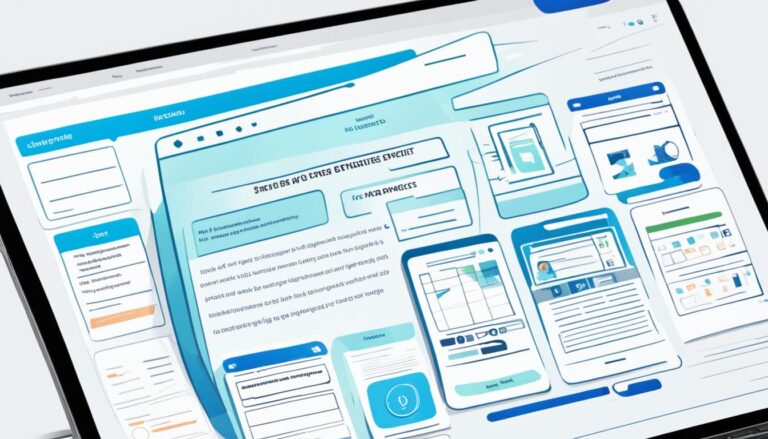CGT manufacturing faces challenges such as scaling up and refining processes. Implementing AI and ML can speed up the CGT development path. This helps products get approved faster. Yet, using AI in CGT making needs skilled training, good data, and process automation. These factors are key for AI to work well in CGT production.
AI and ML can fast-forward many steps in CGT development, like finding therapeutic candidates early. AI makes analysing and understanding data quicker. This reduces the time from a product’s start to its approval. However, using AI in CGT making needs training for researchers, checking data’s quality, and using automation. This includes tasks like cell cleaning and virus cleaning.
Accelerating CGT Development with AI
Artificial intelligence (AI) and machine learning (ML) are changing how we develop cell and gene therapies (CGT). They greatly speed up finding new treatments. With AI, we can find promising therapies faster, moving them from early stages to approval quickly.
AI makes analyzing complex data faster and easier, giving researchers valuable insights. This is vital in CGT manufacturing, where speed is essential. Using AI, advanced algorithms can sift through large amounts of data. They reveal patterns that humans might miss.
To effectively use AI in CGT, researchers must learn new skills. It’s also important to make sure the data used is high quality. Accurate and reliable data is key for AI to work well in developing new therapies.
AI can also make manufacturing more efficient by automating tasks like cell washing and virus purification. This automation saves time on routine tasks. It allows scientists to focus on more important parts of CGT development.
The image above shows how complex manufacturing cell and gene therapies is. It highlights the intricate work required to bring these new treatments to patients.
Overcoming Challenges in AI Integration for CGT
AI integration in CGT manufacturing faces many hurdles. These include issues with data quality, being able to scale, and meeting regulations. Getting enough good-quality data is tough. This is because there’s not much data available and the data is very different from case to case. But, if we can deal with these issues, AI could greatly improve CGT manufacturing.
Combining different kinds of data is another big challenge. CGT uses data from many areas like genomics and clinical trials. It is hard and takes a lot of time to make this data work together for AI. The key is to make sure all the data fits well with the AI tools we use.
Keeping data safe is also very important. With so much data being used, it’s critical to have strong security measures. This is to keep patient details private and safe from any unauthorized access. Using good data management and encryption can help keep data safe.
“For AI in CGT to work, we must check everything carefully and follow rules to keep patients safe,” says Dr. Samantha Anderson, a CGT expert. “AI used in making key decisions must be thoroughly checked and meet all regulations.”
To handle more data as CGT grows, AI tools must be made to deal with large amounts of data. As more patients join trials, the amount of data grows fast. So, AI must also grow quickly to keep up with analysing and using this data properly.
In conclusion, bringing AI into CGT manufacturing offers many benefits and challenges. By focusing on improving data quality, being able to scale, and sticking to regulations, CGT developers can make the most of what AI offers. This can lead to better manufacturing methods and outcomes for patients.
Challenges in AI Integration for CGT Manufacturing
| Challenges | Explanation |
|---|---|
| Data Quality | It’s hard to gather and look after high-quality data due to the lack of available data and its diversity. |
| Data Integration | Merging data from different fields like genomics and trials is challenging but necessary for AI. |
| Data Security | Strong measures are needed to keep data safe and protect patients’ privacy. |
| Validation and Compliance | Checking AI thoroughly and following rules is key for keeping patients safe and ensuring quality. |
| Scalability | AI must be able to deal with more and more data as CGT manufacturing grows. |
Strategic Considerations for Adopting AI in CGT
When thinking about using AI in CGT, companies must think carefully about various strategic points. One key choice is deciding between outsourcing AI work or developing it in-house. Each path has its advantages and challenges. It is crucial to consider what best meets the organization’s needs and resources.
Outsourcing AI lets CGT developers access skilled outside experts or AI service providers. This path is good for gaining specialized knowledge and the latest tech. It also means more flexibility when more help is needed. But, this might limit how much the AI can be custom-made and controlled.
If CGT developers choose to grow AI skills within their company, they get full control over the creation process. This way allows for making AI that fits exactly what they need. It also means data and inventions stay within the company. Yet, this choice demands a big investment in finding and training skilled people and in setting up the needed tech.
Data Acquisition and Handling Strategies
Getting good data and managing it well is key for AI success in CGT. Top-quality data lets AI systems make correct predictions and give useful insights. CGT companies must make sure they can get good data from many places, like clinical tests, patient details, and biology data banks. Keeping data clean and compatible is very important.
It’s also vital to keep data safe and respect patients’ privacy. CGT developers need strong security for data storage and sharing. They must hide patient details and get permission for using the data.
Establishing a Robust Process for AI Algorithm Development
CGT developers need a solid way to create, check, and use AI algorithms. They must pick, train, and test models carefully to get reliable results. Testing must be thorough, following set rules and standards.
It’s important to keep checking and updating AI systems to keep up with new data and CGT changes. Understanding and being able to explain how AI models work helps gain trust from those who regulate, use, and benefit from them.
Considering these strategic points, including how to introduce AI, outsourcing versus in-house work, and handling data well, CGT developers can make the most of AI. This helps avoid risks while ensuring safety and the quality of products for patients.
Conclusion
AI could change how we make CGT by making the development process faster and more efficient. But, integrating AI in CGT faces hurdles like not enough data, data quality, scaling up, and following the rules. It’s critical to choose the right development path and manage data well to use AI’s power in CGT.
To beat these challenges, CGT creators need a strong data system. It should handle data collection, quality checks, and management of various high-quality data. Investing in ways to collect and manage data can solve issues with data availability and quality. Also, making AI algorithms that can deal with bigger data sets will help CGT manufacturing grow.
Moreover, understanding and following the rules is vital for AI use in CGT. Sticking to regulations on data privacy, security, and patient safety is necessary. This builds trust and meets the legal must-dos. Working together with rule-making bodies and following the best practices in data handling helps CGT developers use AI well. This pushes progress in the field and, in the end, betters patient care.
FAQ
What is cell and gene therapy (CGT)?
Cell and gene therapy (CGT) involves using special cells or genes to fight diseases. It can treat many illnesses, like cancer and genetic conditions. This approach is at the forefront of medical science.
How can artificial intelligence (AI) and machine learning (ML) accelerate CGT development?
AI and ML can make CGT development faster. They help find potential treatments early on. Also, they make analyzing data quicker and can bring therapies from start to finish sooner.
What are the challenges in implementing AI in CGT manufacturing?
Using AI in CGT making needs people to be skilled and data to be high quality. It’s hard because of the little data available, which is often very different. Keeping data safe while using it in many ways is tough too. Making sure AI models are safe and meet regulations is key for keeping patients and therapies safe.
What strategic considerations should CGT developers keep in mind when adopting AI?
CGT developers must decide between making or buying AI technology. It’s important to manage data well to ensure its quality and safety. They also need to create a solid plan for using AI in their work. This includes making, testing, and applying AI algorithms effectively.
Source Links
- https://pharmaceuticalmanufacturer.media/pharmaceutical-industry-insights/latest-pharmaceutical-manufacturing-industry-insights/simplifying-cgt-a-necessary-precursor-to-integrating-ai-and-/
- https://www.cellandgene.com/doc/key-considerations-for-cell-gene-therapy-developers-to-tap-into-ai-0001
- https://oxfordglobal.com/cell/resources/cgt-manufacturing-key-considerations-for-implementing-ai-ml-approaches


















